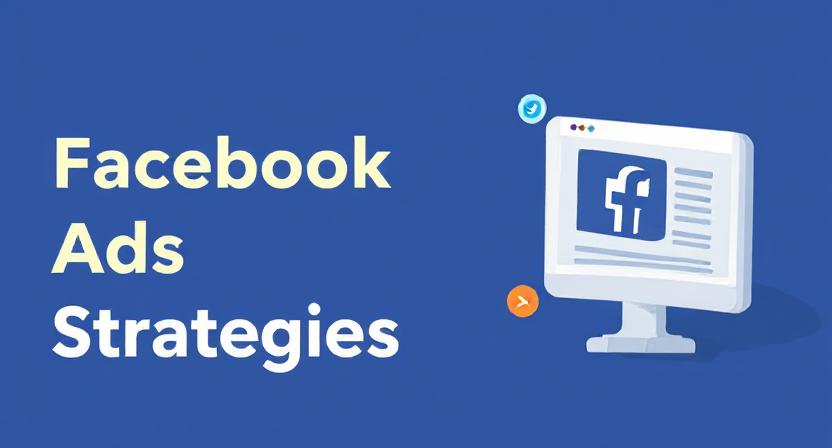
Kleverish Digital Marketing Services That Works  ×
×
 ×
×


Success in Facebook ad results may seem elusive, but sometimes the smallest tweaks can yield the biggest results. Imagine transforming a profitable campaign into a game-changing revenue stream with just one five-minute adjustment—this is precisely what happened when a single optimization doubled a client’s ad profits in just 30 days.
This article will break down the steps, strategies, and insights from the process, showing you exactly how to replicate that success in your own Facebook campaigns. You’ll learn why this simple structural change was so effective, how to handle similar campaign dilemmas, and the importance of tracking results at a higher level to maximize profitability.
Whether you’re a seasoned marketer or just starting out, this deep-dive will provide actionable tips that you can apply immediately to elevate your Facebook ads performance.
Before discussing the optimization, it’s crucial to understand the context. The client in question was a product-based business operating at scale. Their Facebook campaigns were driving a 2.8X return on ad spend (ROAS), which was profitable but far from their true potential.
The campaigns focused on a key flagship product, often a winning strategy for businesses with multiple offerings. By acquiring new customers through this one product, the company relied on upselling and cross-selling through email, SMS, and retargeting to maximize customer lifetime value later.
At the time, the account structure consisted of nine different campaigns, each dedicated to a specific country. The target markets included major English-speaking countries such as the U.S., U.K., Canada, and Australia, along with select Western European regions where English is commonly spoken.
While this structure allowed for localized strategies, it posed significant challenges, including resource allocation and performance variation among different countries. Other obstacles included determining whether to localize ad copy for different markets and understanding which regions would produce the best long-term ROAS.
The solution? Consolidating the nine individual country campaigns into a single campaign while maintaining the country-specific targeting at the ad set level. Additionally, Advantage Campaign Budget (formerly known as Campaign Budget Optimization) was turned on, allowing Meta to manage budget allocation dynamically across all ad sets.
This optimization might sound small, but it directly tackled the key challenge of resource allocation across markets. Instead of splitting attention and resources manually over nine campaigns, the consolidated structure allowed Meta’s algorithm to distribute the budget to the best-performing regions in real-time.

Campaign Budget Optimization (CBO) shifts the budget-setting responsibility to the campaign level and allows Meta to allocate funds between ad sets dynamically. This change offered several advantages in this scenario:
1. Dynamic Budget Allocation
By consolidating campaigns, the system could instantly adjust budgets toward the best-performing countries. This method is far more adaptive than manual oversight, which often lags behind real-time performance changes.
2. Leveraging Meta’s Predictive Algorithm
Meta’s algorithm can detect patterns and predict performance shifts more effectively than any manual process. For instance, it might foretell demand spikes in specific markets before they happen, reallocating resources preemptively
3. Ongoing Optimization
Budget allocation wasn’t static. Over the initial 30 days (and beyond), the system constantly adapted to shifting behaviors. This flexibility ensured that every dollar worked harder.
The outcome was dramatic. Within the first 30 days of implementing this simple restructuring, ROAS jumped from 2.8X to 3.7X—a 30% improvement. But that’s not the whole story.
Because advertising costs remained stable while revenue increased, the overall profitability more than doubled. This snowball effect is particularly pronounced in product-based businesses with steady margins. A higher volume of sales amplifies profits disproportionately when costs remain constant.
Facebook campaigns today benefit from simplicity. While it’s tempting to overcomplicate account structures with multiple campaigns, nuanced ad sets, and hyper-specific targeting rules, simpler campaigns often perform better for several reasons:
1.Easier Algorithm Optimization
Fewer moving pieces mean Meta’s algorithm can gather data faster and allocate resources more effectively.
2. Unified Learning
A single campaign consolidates performance data, leading to better-informed learning phases and faster scalability.
3. Reduced Management Overhead
Campaign split management across multiple segments (like different countries) drains resources. Consolidation minimizes micromanagement, freeing up time for other strategic efforts.

Here’s why this change worked so well and how you can apply these principles to your campaigns:
1. Leave Decision-Making to Meta’s Algorithm
Meta’s algorithm is incredibly advanced, especially when it comes to budget allocation and predictive behavior. By enabling Advantage Campaign Budget, Meta can anticipate high-performing audiences or moments, often beyond human capabilities.
For example, the algorithm observed performance shifts across countries during different times of the month. U.K. ad spend, for example, increased around payday—a trend that would be difficult to predict or act on without automated tools.
2. Better Allocation Unlocks Hidden Performance Gaps
Manually reallocating budgets each day isn’t feasible for most marketers. Advantage Campaign Budget solved underperforming allocations almost instantly. For instance, if Canada’s ROAS dropped, resources naturally shifted to markets like the U.S. where returns were higher.
3. The Scalability Myth
Many advertisers assume that scaling budgets will improve ROAS. However, larger budgets often reduce ROAS due to saturation and increased competition. Prioritize profitability over vanity metrics. It’s better to run campaigns at high efficiency than to chase inflated numbers at the expense of profit margins.
Accurate performance tracking was another crucial element of the campaign’s success. Many advertisers rely on Meta’s built-in reporting tools to analyze ROAS, yet these metrics can be incomplete.
Privacy regulations and tracking limitations, such as Meta’s default 7-day attribution window, mean that some actions—especially those requiring longer consideration periods—might not get attributed correctly. This is where third-party software like Hyros comes in, bridging the gap between reported figures and actual results.
Example of Tracking Efficiencies
A Hyros report showed that one ad campaign generated $15,000 in revenue, while Meta initially reported $3,000 for the same campaign. The gap resulted from missed attribution of customer actions beyond the 7-day window. With accurate data, campaign decisions became far more informed, ultimately driving better returns.
Want to replicate the success of doubling your profits in just 30 days? Here’s how you can start applying similar strategies immediately:
1. Simplify Your Campaign Structure
2. Turn On Advantage Campaign Budget
3. Focus on High-Potential Products
4. Invest in Data Accuracy
5. Test and Adapt Continuously
Delivering exceptional Facebook ad results doesn’t always involve complex tactics or months of effort. Sometimes, as evidenced by the campaign discussed, a simple optimization can unlock hidden potential and significantly boost profitability. At its core, the shift from nine disparate campaigns to one consolidated campaign reflects a broader lesson—keeping things simple often allows you to leverage the full power of Meta’s advertising tools. Combine this with accurate data tracking and strategic thinking, and you’ll be well on your way to creating ad campaigns that deliver extraordinary results.
If there’s one thing to take away, it’s this: Always think critically about your campaign structure and don’t underestimate the impact of small changes. That five-minute adjustment might just be the key to unlocking your next big win.

Hello, I’m Arpan, a dedicated social media marketer passionate about crafting engaging content and driving results-driven campaigns. With a keen eye for trends and a strategic approach, I strive to elevate brands and foster meaningful connections with their audience. Let’s collaborate to unlock the full potential of your social media presence!



 Rated 4.99/5 overall
across 100+ reviews
Rated 4.99/5 overall
across 100+ reviews